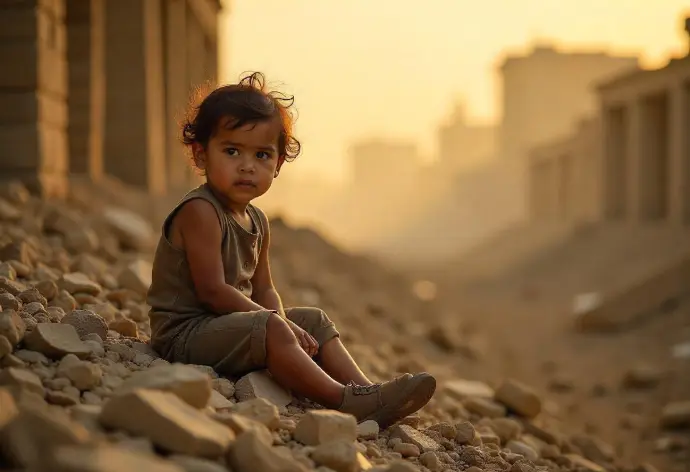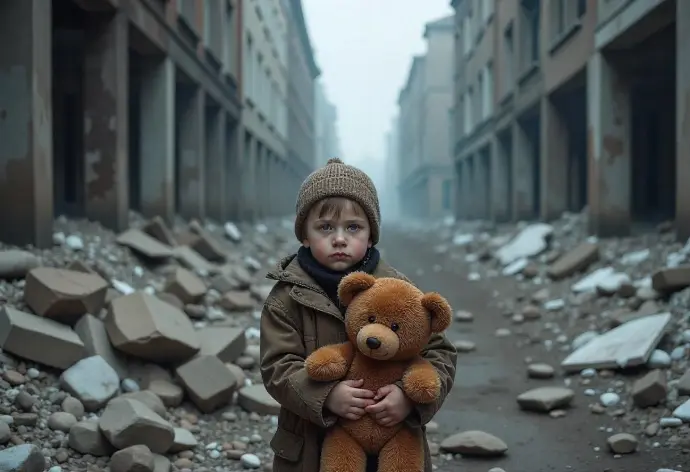The Use of Children in War Propaganda: The Manipulation of Innocence
In our topic "The Use of Children in War Propaganda: The Manipulation of Innocence," we will thoroughly and profoundly explore the impact of the manipulation of children in war propaganda. Prepare to discover how innocence becomes a tool of conflict. Join us on this journey of reflection and analysis on human rights in armed conflict!
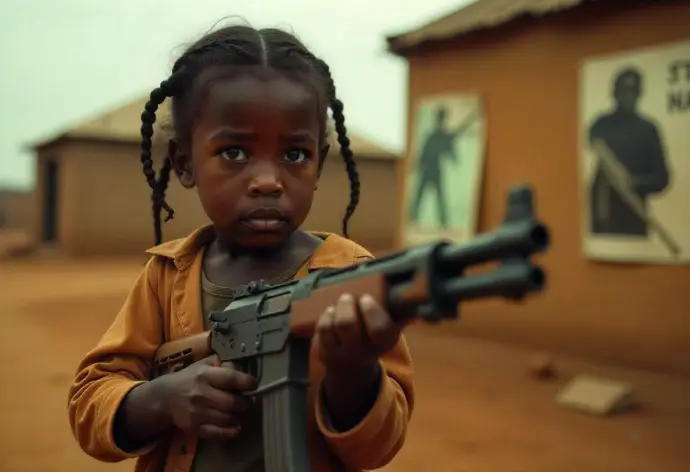
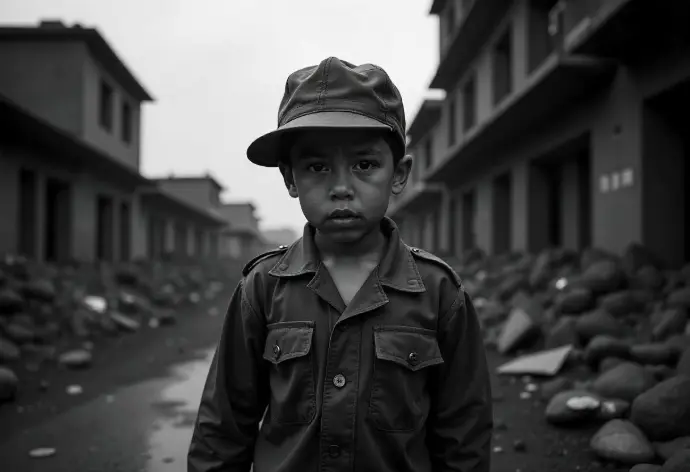
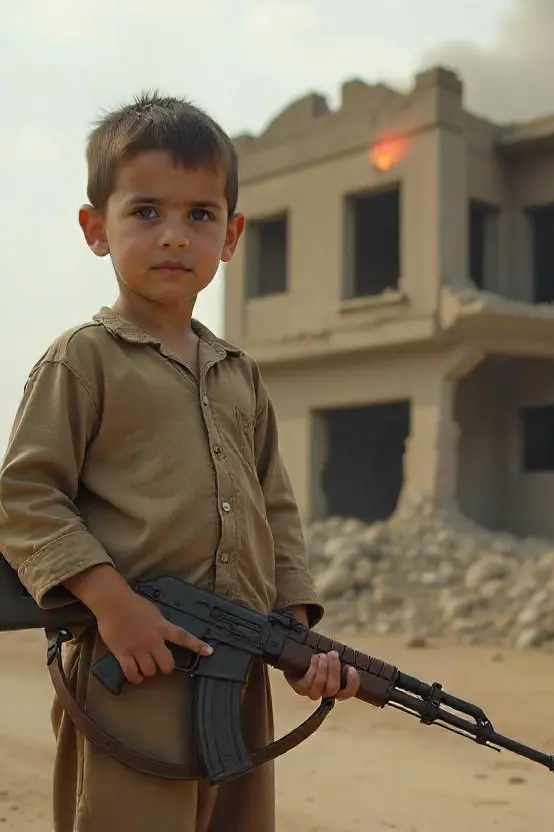
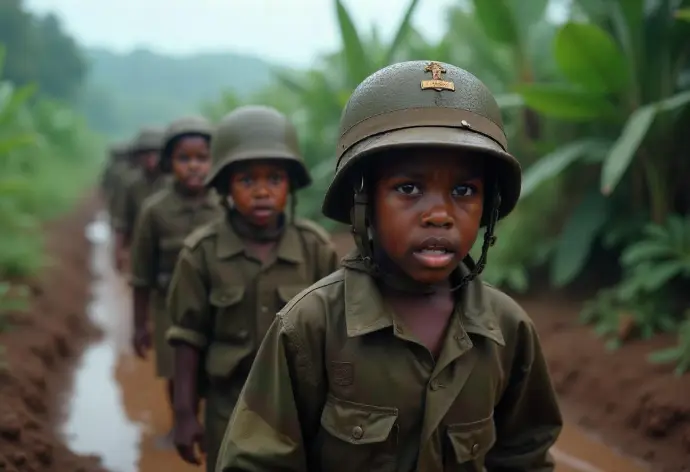
Introduction
War propaganda has been used throughout history to influence public opinion, recruit soldiers, and dehumanize the enemy. During the First and Second World Wars, various media were used to disseminate propaganda messages, including posters, films, radio, and newspapers. These messages sought to generate a sense of unity, patriotism, and support for the war effort, portraying the enemy as a threat that must be fought.
The manipulation of innocence, particularly the use of children in war propaganda, has been a recurring strategy. Children are presented as symbols of purity and vulnerability, which profoundly impacts public perceptions. This tactic seeks to generate empathy, solidify the population's pro-war stance, and justify violent actions.
Understanding this historical context is essential to analyzing the evolution of war propaganda and its impact on human rights, especially with regard to the manipulation of innocence.
The use of children in war propaganda is a highly relevant issue, as it represents a clear violation of children's rights. Children are manipulated and exposed to traumatic situations that significantly impact their psychological and emotional development.
Furthermore, the presence of children in war propaganda carries the risk of normalizing violence and armed conflict, perpetuating a cycle of violence that affects future generations. Analyzing this manipulation is essential to highlighting the devastating consequences it has on children and society as a whole.
Furthermore, examining this phenomenon allows us to dismantle propaganda messages and promote critical thinking in society, fostering empathy and solidarity toward the victims of war, including children who are used for propaganda purposes.
The manipulation of innocence in war propaganda has a direct impact on human rights globally. The instrumentalization of children as propaganda tools violates the right to protection of children, enshrined in the Convention on the Rights of the Child.
Furthermore, the use of children in war propaganda contributes to the dehumanization of the enemy, promoting intolerance and hatred toward other ethnic or national groups. This violates the right to equality and non-discrimination, generating divisions and conflicts that hinder the construction of peaceful societies that respect human rights.
In this sense, analyzing the impact of the manipulation of innocence in war propaganda is essential to promoting the protection of human rights and working to build a culture of peace and mutual respect globally.
The Use of Children in War Propaganda
In the context of armed conflict, the participation of children in war propaganda has been a historical practice that has evolved over time. From the First and Second World Wars to the most recent conflicts, children have been used as tools to disseminate political and military messages. In many cases, they are portrayed as heroes, martyrs, or symbols of resistance, raising important ethical and moral questions.
The evolution of technology and media has amplified the reach and sophistication of war propaganda, directly impacting children's participation in these messages. The influence of social media, viral videos, and misinformation has transformed the way children are used in war propaganda, raising additional concerns for their protection and well-being.
Understanding the history and evolution of this practice is essential to effectively address its current and future implications for the protection of children's rights in armed conflict.
Children's involvement in war propaganda has significant psychological consequences. The use of shocking images and messages can cause trauma, anxiety, fear, and mistrust in children exposed to these materials. The manipulation of children's innocence and vulnerability for political and military purposes can leave deep and lasting emotional scars.
Children used in war propaganda may experience post-traumatic stress disorder, difficulties establishing healthy interpersonal relationships, and emotional problems that affect their long-term well-being. It is crucial to consider the psychological impact of this form of child exploitation when designing prevention and protection strategies in contexts of armed conflict.
The psychological effects of participation in war propaganda can last well beyond the conflict itself, underscoring the importance of addressing this issue in a comprehensive and sustained manner.
The long-term consequences of children's involvement in war propaganda can be devastating. Many of these children face difficulties reintegrating into society, accessing education, and obtaining adequate psychological and emotional support. Stigmatization, social rejection, and discrimination are common challenges faced by those who have been used in war propaganda.
Furthermore, exposure to violence and brutality at a young age can shape these children's perceptions of the world and their lives in profound and complex ways. Rebuilding their identities and recovering from their traumatic experiences requires a comprehensive approach that addresses not only immediate needs but also the long-term repercussions on their development and well-being.
The international community, governments, and human rights organizations must work together to protect and support children used in war propaganda, recognizing and addressing the complex implications of this form of child exploitation in armed conflict.
The use of minors in war propaganda is a form of child exploitation that seeks to manipulate public opinion through the image of violated innocence. This tactic exploits children's vulnerability to generate emotional impact and justify war actions. Child exploitation in war propaganda not only affects the minors used, but also contributes to the dehumanization of the conflict, perpetuating violence and suffering.
The semantic variation that occurs when referring to the use of minors in war propaganda is an attempt to show the reality behind this practice, highlighting the vulnerability of children and the exploitation to which they are subjected. By calling it child exploitation instead of simply the use of children, the gravity of this human rights violation is highlighted and seeks to raise awareness about the devastating consequences it has on the children affected.
It is important to analyze and denounce child exploitation in war propaganda from a global perspective, recognizing that this practice violates children's fundamental rights and violates their physical and psychological integrity. This semantic variation invites us to reflect on the collective responsibility to protect children and demand respect for their dignity, beyond political or strategic considerations in contexts of armed conflict.
Human rights violations in the manipulation of children in war propaganda
The manipulation of children in war propaganda is a clear violation of human rights, especially the rights of children. In many armed conflicts, children are used as tools to spread propaganda in favor of a particular side, exposing them to extremely dangerous situations that are detrimental to their physical and psychological well-being.
These acts constitute a clear violation of children's rights, as established in the United Nations Convention on the Rights of the Child. The right to protection from exploitation and recruitment in armed conflict, as well as the right to preserve their dignity and freedom of thought, conscience, and religion, are flagrantly violated in this context.
The exposure of children to violence and ideological manipulation through war propaganda leaves profound scars on their emotional and mental development, which represents a clear violation of their fundamental rights. It is essential to address this problem from a comprehensive perspective that guarantees the protection and well-being of children in situations of armed conflict.
Responsibility of political and military actors in the manipulation of children in war propaganda
Conclusion
The manipulation of children in war propaganda is an issue of utmost importance that requires urgent and comprehensive attention. Children's vulnerability makes them easy prey for propaganda purposes, which represents a clear violation of their fundamental rights and causes irreparable damage to their emotional and psychological development.
It is crucial to reflect on the long-term impact of children's exposure to situations of violence and manipulation in contexts of armed conflict. Desensitization, trauma, and the loss of innocence are serious consequences that can profoundly affect the well-being of these children, both now and in their future. Addressing this issue comprehensively is essential to ensuring a more just and safe future for future generations.
It is imperative that the international community, governments, and non-governmental organizations join forces to implement concrete measures to protect children from manipulation in war propaganda. This includes strengthening legal frameworks and oversight mechanisms, as well as promoting educational campaigns to raise awareness about this issue and prevent similar incidents in the future.
The manipulation of children in war propaganda is a shocking reality that continues today, reminding us that the vulnerability of innocence continues to be exploited in conflicts around the world. It is crucial that, as a society, we take steps to protect children from manipulation in war propaganda and foster an environment where innocence is preserved and respected. Each of us has the power to create positive change in the world, and it is our responsibility to work toward a future where children are not used as pawns in other people's conflicts.
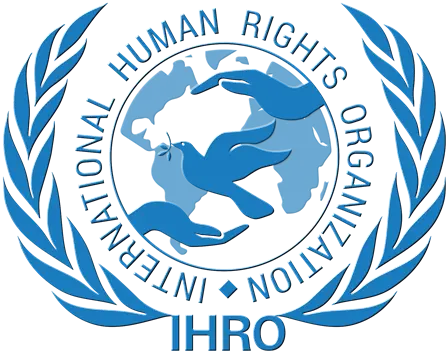

 IHRO NEWS
IHRO NEWS